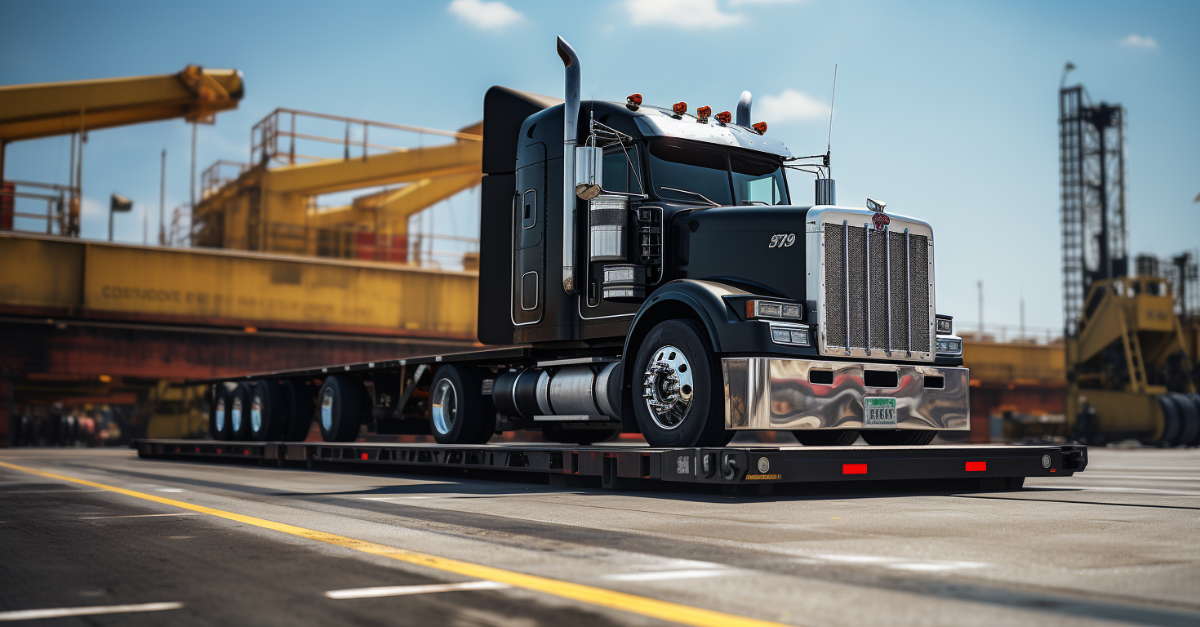Commercial Fleet Management: Strategies, Tools & Tips
Commercial fleet management plays a vital role in keeping businesses running smoothly, especially in industries like transportation, logistics, and...
Keep an eye on the road
Simplify your driver's routine
For efficient decision making
Ensure the compliance of your fleet
Simplify the daily life of your drivers
Maximize the value of your data
Unparalleled monitoring of your assets
The friendly competition that pays off
Planning powered by data
Exceed your customers' expectations
Provide better service to your users
Maximize the satisfaction of your citizens
Simplify your daily life on the construction site
Facilitate the electrification of your fleet
Our experts meet your needs
Easily meet the standards
Improve the safety of your drivers
Protect your data and your fleet
6 min read
Miguel Lage
Nov 6, 2023 10:58:20 AM

Vehicle specifications can be confusing, but knowing the Gross Vehicle Weight Rating (GVWR) is crucial for any vehicle owner. GVWR is more than just a number; it determines safety, performance and legal compliance. Whether you're a car enthusiast, a concerned parent, or someone considering purchasing a vehicle, understanding GVWR is important. This post will explain the significance of GVWR, its historical context, and how it impacts modern vehicles. So buckle up, and let's deeply dive into the details!
When it comes to automotive specifications, the term "GVWR" is often used. But what does it mean, and why should drivers care? Let's break it down.
At its core, GVWR, or Gross Vehicle Weight Rating, represents the maximum safe weight of a vehicle when fully loaded. This isn't just a random number; it's meticulously calculated to ensure your safety on the road. The GVWR encompasses several weight components:
It's easy to get lost in the jargon of automotive weight classifications. However, understanding the distinction between GVWR and other measurements is crucial:
While other measurements focus on specific aspects, GVWR provides a holistic view, ensuring that the total weight (vehicle + cargo + passengers) remains within safe limits.
In the vast landscape of automotive specifications, GVWR holds a unique position, acting as a beacon for safety and performance. But how is this crucial number determined? Let's pull back the curtain and explore the intricate process behind setting vehicles' Gross Vehicle Weight Rating.
Every vehicle's GVWR is not just a product of whim or guesswork; it results from rigorous testing and analysis. Vehicle manufacturers invest significant resources into:
While foundational testing is paramount, Gross Vehicle Weight Rating is also shaped by a myriad of external and evolving factors:
GVWR is not a universal metric that applies to all types of vehicles. It may differ significantly depending on the type of vehicle you are dealing with. Whether you are a potential buyer, a car enthusiast, or want to understand the differences between various vehicles, this section will help you. Let's explore how GVWR varies across different vehicle categories.
Passenger cars are a familiar sight on our roads, designed primarily for commuting people. Their GVWR, generally lower than larger vehicles, balances fuel efficiency and safety. This makes them ideal for driving in cities and for long highway trips.
Trucks and SUVs come to mind when you think of carrying heavy loads or venturing off-road. These vehicles boast a higher GVWR, a testament to their rugged build and capability to handle passengers and hefty cargo. Understanding the Gross Vehicle Weight Rating of trucks and SUVs is crucial for optimal performance and safety, whether for towing, off-roading or simply making a statement on the road.
Commercial vehicles, including delivery vans and buses, have a distinct role in transporting goods and people. Their GVWR is determined based on their intended purpose and load-carrying capacity. As these vehicles are often used frequently and carry valuable cargo, it is not just a suggestion but a responsibility to comply with their GVWR guidelines.
Regarding Trailers and RVs, their weight rating is unique as it is based on the vehicle's weight and the potential cargo it can hold. For RVs, this includes living amenities. Understanding and respecting your trailer or RV's Gross Vehicle Weight Rating before embarking on a road trip or hauling cargo is crucial. This will ensure your safety and make your journey a smooth one.
It's important to understand that vehicles are designed for different purposes, and their GVWR reflects their capabilities, intent, and design. By comprehending how GVWR varies across various types of vehicles, you can ensure your safety while optimizing performance and increasing longevity. So, the next time you're driving or considering buying a new vehicle, keep in mind that Gross Vehicle Weight Rating is more than just a number - it's the key to a harmonious relationship between you, your vehicle, and the road.
While the technicalities of Gross Vehicle Weight Rating are essential for automotive pros, the real-world implications of this rating touch every driver on the road. Whether you're behind the wheel of a compact sedan or commanding a hefty truck, understanding the practical effects of GVWR can be a game-changer for your driving experience.
Every vehicle is engineered with a specific performance envelope in mind, and GVWR plays a pivotal role in defining those boundaries.
Safety should always be a driver's top priority, and adhering to the GVWR is a significant part of that commitment.
Beyond safety and performance, there are legal and financial implications tied to GVWR.
Understanding and respecting the GVWR isn't just about adhering to a manufacturer's guideline—it's about ensuring optimal performance, guaranteeing safety, and avoiding potential legal and financial pitfalls. As you navigate the roads, let GVWR be your compass, guiding you toward responsible and informed driving decisions.
Vehicle modifications can be a thrilling experience for car enthusiasts and professionals alike. These customizations can range from enhancing the vehicle's aesthetics to improving its performance. However, it's crucial to understand the impact these changes can have on your vehicle's Gross Vehicle Weight Rating.
Every change you make to your vehicle, no matter how minor it seems, can influence its GVWR. Here's how:
After customizing your vehicle, it's not just about enjoying the new look or improved performance. It's crucial to ensure that the vehicle remains safe and compliant:
Modifying your vehicle is an exciting journey that allows you to infuse a piece of your personality into your ride. However, with great power (or horsepower!) comes great responsibility. By understanding the implications of modifications on GVWR, you ensure that your vehicle remains a reflection of your style and a beacon of safety on the road.
Understanding and adhering to vehicle specifications, including GVWR, is paramount in the evolving fleet management landscape. AttriX, as Canada's #1 Geotab integrator, is at the forefront of ensuring fleet compliance and safety.
By partnering with AttriX, fleet managers can rest assured that their vehicles comply with GVWR standards and are optimized for peak performance and safety in today's dynamic transportation landscape.

Commercial fleet management plays a vital role in keeping businesses running smoothly, especially in industries like transportation, logistics, and...

In fleet management, fleet compliance services play a much bigger role than just checking a box. They’re about keeping your drivers safe, your...

Trucking has always come with its fair share of challenges, from road safety and liability issues to managing fleet efficiency. As the industry...